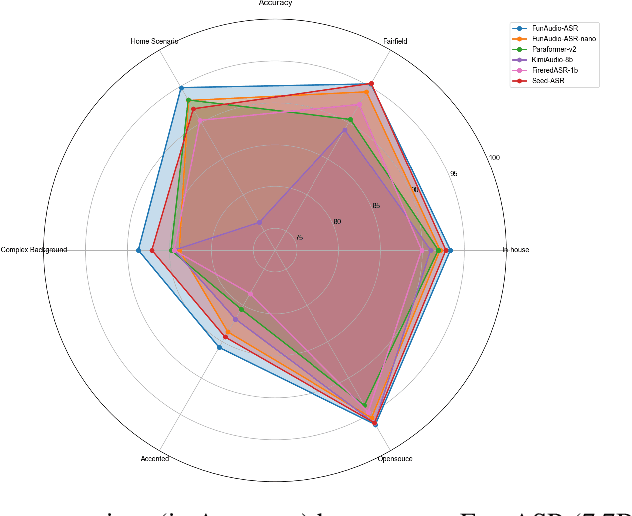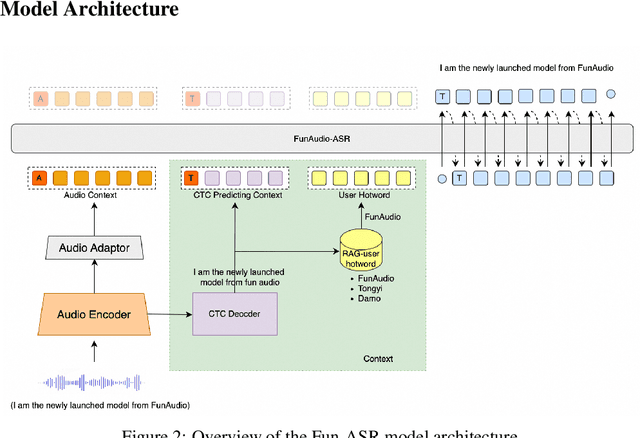Han Zhao
Embodied Robot Manipulation in the Era of Foundation Models: Planning and Learning Perspectives
Dec 28, 2025Abstract:Recent advances in vision, language, and multimodal learning have substantially accelerated progress in robotic foundation models, with robot manipulation remaining a central and challenging problem. This survey examines robot manipulation from an algorithmic perspective and organizes recent learning-based approaches within a unified abstraction of high-level planning and low-level control. At the high level, we extend the classical notion of task planning to include reasoning over language, code, motion, affordances, and 3D representations, emphasizing their role in structured and long-horizon decision making. At the low level, we propose a training-paradigm-oriented taxonomy for learning-based control, organizing existing methods along input modeling, latent representation learning, and policy learning. Finally, we identify open challenges and prospective research directions related to scalability, data efficiency, multimodal physical interaction, and safety. Together, these analyses aim to clarify the design space of modern foundation models for robotic manipulation.
Harli: SLO-Aware Co-location of LLM Inference and PEFT-based Finetuning on Model-as-a-Service Platforms
Nov 19, 2025Abstract:Large language models (LLMs) are increasingly deployed under the Model-as-a-Service (MaaS) paradigm. To meet stringent quality-of-service (QoS) requirements, existing LLM serving systems disaggregate the prefill and decode phases of inference. However, decode instances often experience low GPU utilization due to their memory-bound nature and insufficient batching in dynamic workloads, leaving compute resources underutilized. We introduce Harli, a serving system that improves GPU utilization by co-locating parameter-efficient finetuning (PEFT) tasks with LLM decode instances. PEFT tasks are compute-bound and memory-efficient, making them ideal candidates for safe co-location. Specifically, Harli addresses key challenges--limited memory and unpredictable interference--using three components: a unified memory allocator for runtime memory reuse, a two-stage latency predictor for decode latency modeling, and a QoS-guaranteed throughput-maximizing scheduler for throughput maximization. Experimental results show that Harli improves the finetune throughput by 46.2% on average (up to 92.0%) over state-of-the-art serving systems, while maintaining strict QoS guarantees for inference decode.
When LRP Diverges from Leave-One-Out in Transformers
Oct 21, 2025Abstract:Leave-One-Out (LOO) provides an intuitive measure of feature importance but is computationally prohibitive. While Layer-Wise Relevance Propagation (LRP) offers a potentially efficient alternative, its axiomatic soundness in modern Transformers remains largely under-examined. In this work, we first show that the bilinear propagation rules used in recent advances of AttnLRP violate the implementation invariance axiom. We prove this analytically and confirm it empirically in linear attention layers. Second, we also revisit CP-LRP as a diagnostic baseline and find that bypassing relevance propagation through the softmax layer -- backpropagating relevance only through the value matrices -- significantly improves alignment with LOO, particularly in middle-to-late Transformer layers. Overall, our results suggest that (i) bilinear factorization sensitivity and (ii) softmax propagation error potentially jointly undermine LRP's ability to approximate LOO in Transformers.
MELA-TTS: Joint transformer-diffusion model with representation alignment for speech synthesis
Sep 18, 2025Abstract:This work introduces MELA-TTS, a novel joint transformer-diffusion framework for end-to-end text-to-speech synthesis. By autoregressively generating continuous mel-spectrogram frames from linguistic and speaker conditions, our architecture eliminates the need for speech tokenization and multi-stage processing pipelines. To address the inherent difficulties of modeling continuous features, we propose a representation alignment module that aligns output representations of the transformer decoder with semantic embeddings from a pretrained ASR encoder during training. This mechanism not only speeds up training convergence, but also enhances cross-modal coherence between the textual and acoustic domains. Comprehensive experiments demonstrate that MELA-TTS achieves state-of-the-art performance across multiple evaluation metrics while maintaining robust zero-shot voice cloning capabilities, in both offline and streaming synthesis modes. Our results establish a new benchmark for continuous feature generation approaches in TTS, offering a compelling alternative to discrete-token-based paradigms.
FunAudio-ASR Technical Report
Sep 15, 2025



Abstract:In recent years, automatic speech recognition (ASR) has witnessed transformative advancements driven by three complementary paradigms: data scaling, model size scaling, and deep integration with large language models (LLMs). However, LLMs are prone to hallucination, which can significantly degrade user experience in real-world ASR applications. In this paper, we present FunAudio-ASR, a large-scale, LLM-based ASR system that synergistically combines massive data, large model capacity, LLM integration, and reinforcement learning to achieve state-of-the-art performance across diverse and complex speech recognition scenarios. Moreover, FunAudio-ASR is specifically optimized for practical deployment, with enhancements in streaming capability, noise robustness, code-switching, hotword customization, and satisfying other real-world application requirements. Experimental results show that while most LLM-based ASR systems achieve strong performance on open-source benchmarks, they often underperform on real industry evaluation sets. Thanks to production-oriented optimizations, FunAudio-ASR achieves SOTA performance on real application datasets, demonstrating its effectiveness and robustness in practical settings.
Boosting Embodied AI Agents through Perception-Generation Disaggregation and Asynchronous Pipeline Execution
Sep 11, 2025Abstract:Embodied AI systems operate in dynamic environments, requiring seamless integration of perception and generation modules to process high-frequency input and output demands. Traditional sequential computation patterns, while effective in ensuring accuracy, face significant limitations in achieving the necessary "thinking" frequency for real-world applications. In this work, we present Auras, an algorithm-system co-designed inference framework to optimize the inference frequency of embodied AI agents. Auras disaggregates the perception and generation and provides controlled pipeline parallelism for them to achieve high and stable throughput. Faced with the data staleness problem that appears when the parallelism is increased, Auras establishes a public context for perception and generation to share, thereby promising the accuracy of embodied agents. Experimental results show that Auras improves throughput by 2.54x on average while achieving 102.7% of the original accuracy, demonstrating its efficacy in overcoming the constraints of sequential computation and providing high throughput.
VLA-Adapter: An Effective Paradigm for Tiny-Scale Vision-Language-Action Model
Sep 11, 2025Abstract:Vision-Language-Action (VLA) models typically bridge the gap between perceptual and action spaces by pre-training a large-scale Vision-Language Model (VLM) on robotic data. While this approach greatly enhances performance, it also incurs significant training costs. In this paper, we investigate how to effectively bridge vision-language (VL) representations to action (A). We introduce VLA-Adapter, a novel paradigm designed to reduce the reliance of VLA models on large-scale VLMs and extensive pre-training. To this end, we first systematically analyze the effectiveness of various VL conditions and present key findings on which conditions are essential for bridging perception and action spaces. Based on these insights, we propose a lightweight Policy module with Bridge Attention, which autonomously injects the optimal condition into the action space. In this way, our method achieves high performance using only a 0.5B-parameter backbone, without any robotic data pre-training. Extensive experiments on both simulated and real-world robotic benchmarks demonstrate that VLA-Adapter not only achieves state-of-the-art level performance, but also offers the fast inference speed reported to date. Furthermore, thanks to the proposed advanced bridging paradigm, VLA-Adapter enables the training of a powerful VLA model in just 8 hours on a single consumer-grade GPU, greatly lowering the barrier to deploying the VLA model. Project page: https://vla-adapter.github.io/.
Omne-R1: Learning to Reason with Memory for Multi-hop Question Answering
Aug 24, 2025Abstract:This paper introduces Omne-R1, a novel approach designed to enhance multi-hop question answering capabilities on schema-free knowledge graphs by integrating advanced reasoning models. Our method employs a multi-stage training workflow, including two reinforcement learning phases and one supervised fine-tuning phase. We address the challenge of limited suitable knowledge graphs and QA data by constructing domain-independent knowledge graphs and auto-generating QA pairs. Experimental results show significant improvements in answering multi-hop questions, with notable performance gains on more complex 3+ hop questions. Our proposed training framework demonstrates strong generalization abilities across diverse knowledge domains.
ReconVLA: Reconstructive Vision-Language-Action Model as Effective Robot Perceiver
Aug 14, 2025Abstract:Recent advances in Vision-Language-Action (VLA) models have enabled robotic agents to integrate multimodal understanding with action execution. However, our empirical analysis reveals that current VLAs struggle to allocate visual attention to target regions. Instead, visual attention is always dispersed. To guide the visual attention grounding on the correct target, we propose ReconVLA, a reconstructive VLA model with an implicit grounding paradigm. Conditioned on the model's visual outputs, a diffusion transformer aims to reconstruct the gaze region of the image, which corresponds to the target manipulated objects. This process prompts the VLA model to learn fine-grained representations and accurately allocate visual attention, thus effectively leveraging task-specific visual information and conducting precise manipulation. Moreover, we curate a large-scale pretraining dataset comprising over 100k trajectories and 2 million data samples from open-source robotic datasets, further boosting the model's generalization in visual reconstruction. Extensive experiments in simulation and the real world demonstrate the superiority of our implicit grounding method, showcasing its capabilities of precise manipulation and generalization. Our project page is https://zionchow.github.io/ReconVLA/.
CEED-VLA: Consistency Vision-Language-Action Model with Early-Exit Decoding
Jun 16, 2025



Abstract:In recent years, Vision-Language-Action (VLA) models have become a vital research direction in robotics due to their impressive multimodal understanding and generalization capabilities. Despite the progress, their practical deployment is severely constrained by inference speed bottlenecks, particularly in high-frequency and dexterous manipulation tasks. While recent studies have explored Jacobi decoding as a more efficient alternative to traditional autoregressive decoding, its practical benefits are marginal due to the lengthy iterations. To address it, we introduce consistency distillation training to predict multiple correct action tokens in each iteration, thereby achieving acceleration. Besides, we design mixed-label supervision to mitigate the error accumulation during distillation. Although distillation brings acceptable speedup, we identify that certain inefficient iterations remain a critical bottleneck. To tackle this, we propose an early-exit decoding strategy that moderately relaxes convergence conditions, which further improves average inference efficiency. Experimental results show that the proposed method achieves more than 4 times inference acceleration across different baselines while maintaining high task success rates in both simulated and real-world robot tasks. These experiments validate that our approach provides an efficient and general paradigm for accelerating multimodal decision-making in robotics. Our project page is available at https://irpn-eai.github.io/CEED-VLA/.
 Add to Chrome
Add to Chrome Add to Firefox
Add to Firefox Add to Edge
Add to Edge